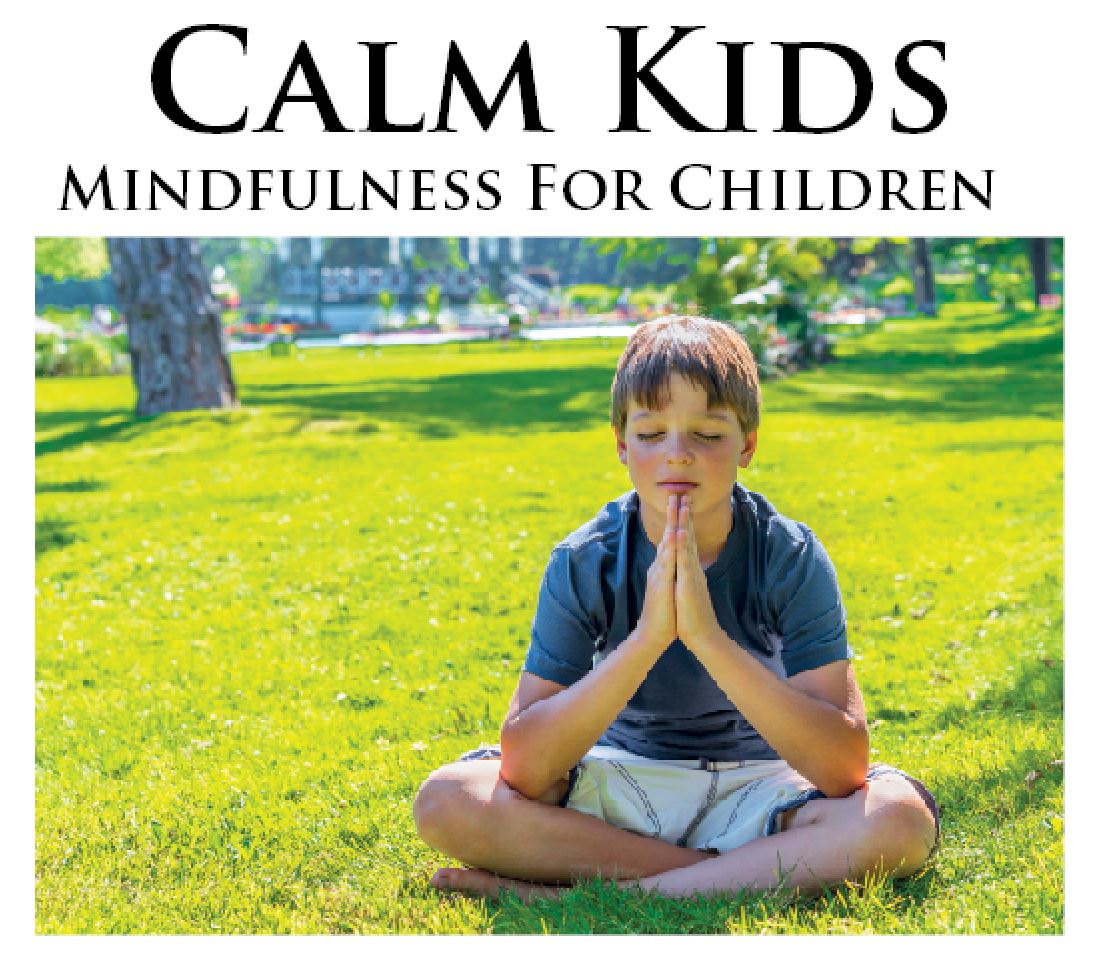Calm Kids - Mindfulness for Children

Mindfulness Meditation is an increasingly popular topic in education and parenting sectors of the community. Whilst it was originally thought that meditation belonged to the few who were prepared to spend hours in silence, times are changing and children around the world and being taught this powerful life skill.
The first question often asked is ‘can kids meditate’? The answer is yes and a growing body of evidence supports the physical, mental and emotional benefits if we take the time to teach them.
Physical benefits of meditation include the stimulation of the parasympathetic nervous system. When activated, this part of our nervous system helps to counteract the impact of stress on our bodies (stimulated by the fight or flight system response). The stress response is designed to keep us alive as human beings but with today’s lifestyle of stimulating computer games, constant online access through mobile phones and computers and the increase of chemicals in our food mean that children are bombarded internally and externally with stress triggers on a daily basis. Technology is now part of everyday life and unless we take our children off to the countryside to live instead of the busy cities, we are best to find a mindful way to cope with the stress it brings.
There are many books written about the power of the mind and children can benefit from learning how to tap into their imaginations on a guided meditation journey that helps to take them to a peaceful place or symbolically using imagery to help let go of difficulties they’ve been experiencing.
Meditation also helps deepen and slow down respiration – thus teaching our children mindfulness may have a positive affect for children experiencing asthma. Because the brain electrically operates at the alpha wave rhythm during meditation it helps nurture this state which is essential for improving sleep. Overall with the reduced effect of stress on the body, children’s immune systems are more balanced as well as teaching children with chronic pain how to manage this through mindfulness.
There are fantastic mental and emotional benefits to children learning meditation too. Mindfulness helps children to focus and concentrate which is essential for study. As it engages the ‘thinking brain’ of the pre-frontal cortex it helps with decision making and finding creative solutions to problems. For emotional intelligence, meditation is a wonderful way for children to express and process what they have been feeling – it helps children find a way to let go of the emotional stress which they have been unable to articulate.
So how do we teach children meditation? Usually children can be easier to teach than adults as there is less logical resistance to the imaginative, guided journey that we take them on. Sometimes adults will feel defeated if they try to teach meditation but find that their children won’t sit still nor engage with the activity. We have been teaching children and adults to learn medtiation for the past 10 years – here are some of our top tips:
Consider the attention span of your child. Regardless of age if it is short then develop a meditation or mindful activity that can lend itself to this with the intention of it gradually increasing with regular practise.
Don’t force your child to meditate. This is the antithesis of meditation and will perhaps discourage a child from every trhing again. Invite them to meditate, or ask them to join you in your meditation. Even call it a meditation ‘game’ if it helps them understand that this can be enjoyable.
Look at the energy of your child. Do they find it difficult to sit still? It would be wise to start with a moving meditation like yoga, walking or even a skipping one. The idea is to help them focus on their body and breath – nothing more. Once they can do this then you can invite them to sit still in meditation.
Let them lie down. For smaller children and toddlers, the more contact they have with the ground, the more relaxed they will feel and the more grounded their energy will be.
What are they interested in? If you look at their hobbies and interests you may find that this helps to engage their imagination and interest when teaching them – using language and imagery that they can relate to. So for example if you wanted them to focus on their breath but this was boring or difficult, and you know they have an interest in robots or science, then ask them to imagine they are in a spacesuit and to make their breath sound like it would in a space suit.
One of the most important things we’ve discovered when teaching kids meditation is to realise that they are also teaching us – it is a 2-way process as they help us release our creativity through our imagination and learn to be more calm with them as well as us showing them what they can do with a little bit of guidance, focus and time.
Whatever you try to teach, remember that it is important that you also practise meditation. There is no point in trying to teach children something that we are not prepared to teach ourselves. Children can really sense when we are not being sincere.
Lorraine Murray is the founder of Connected Kids – a programme showing adults how to teach children meditation and the author of Calm Kids – help children relax with mindful activities (available on Amazon or the website below). She has been teaching and researching this subject for the past 10 years.
Latest Issue
Upcoming Events
-
17/04/2020 to 26/04/2020
-
18/04/2020
-
23/04/2020
-
15/05/2020 to 23/05/2020
-
16/05/2020 to 17/05/2020
Recent Articles
Article Archive
- November 2011 (2)
- January 2012 (3)
- February 2012 (2)
- March 2012 (2)
- April 2012 (4)
- May 2012 (4)
- June 2012 (1)
- July 2012 (3)
- August 2012 (2)
- October 2012 (2)

